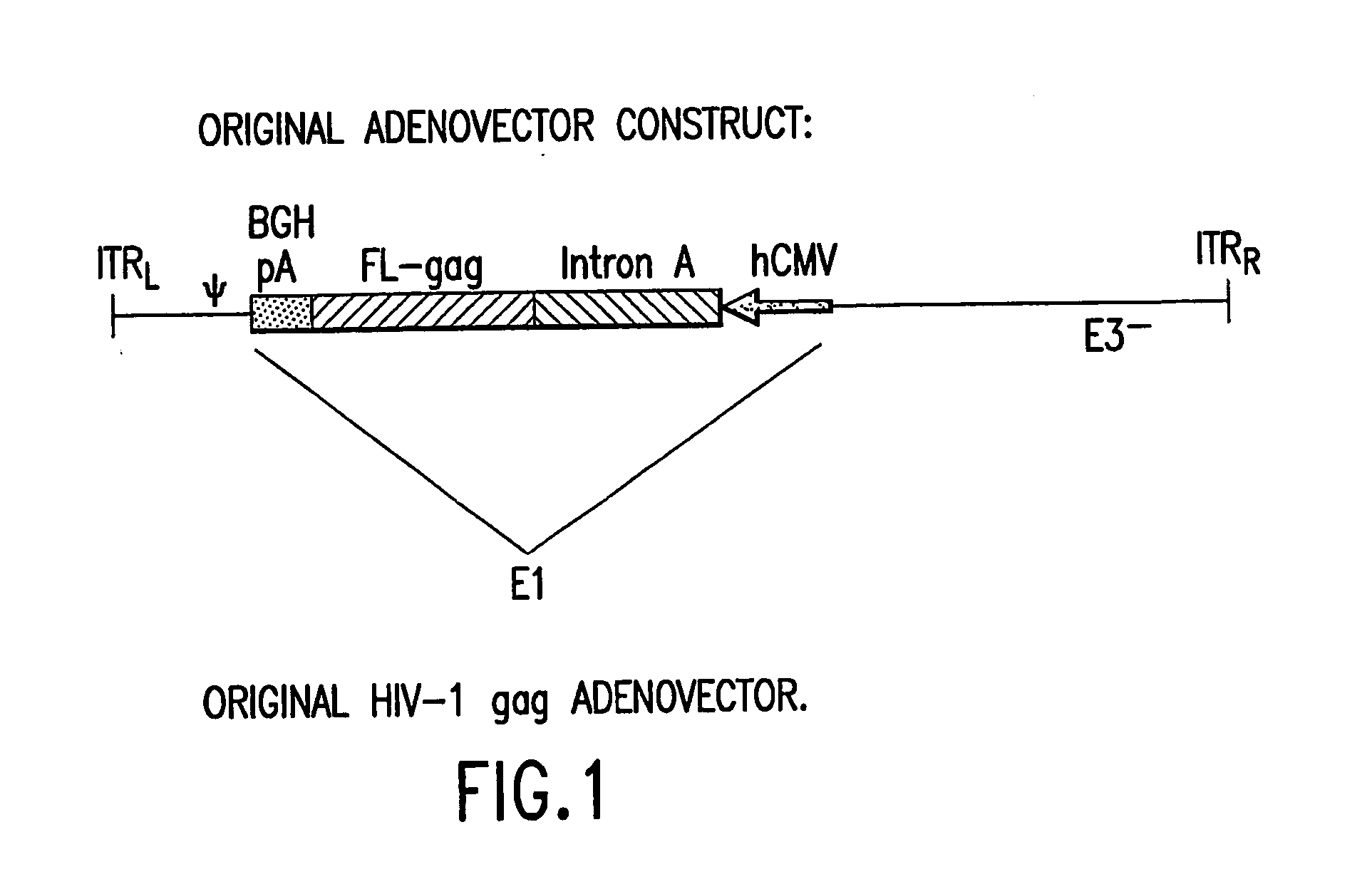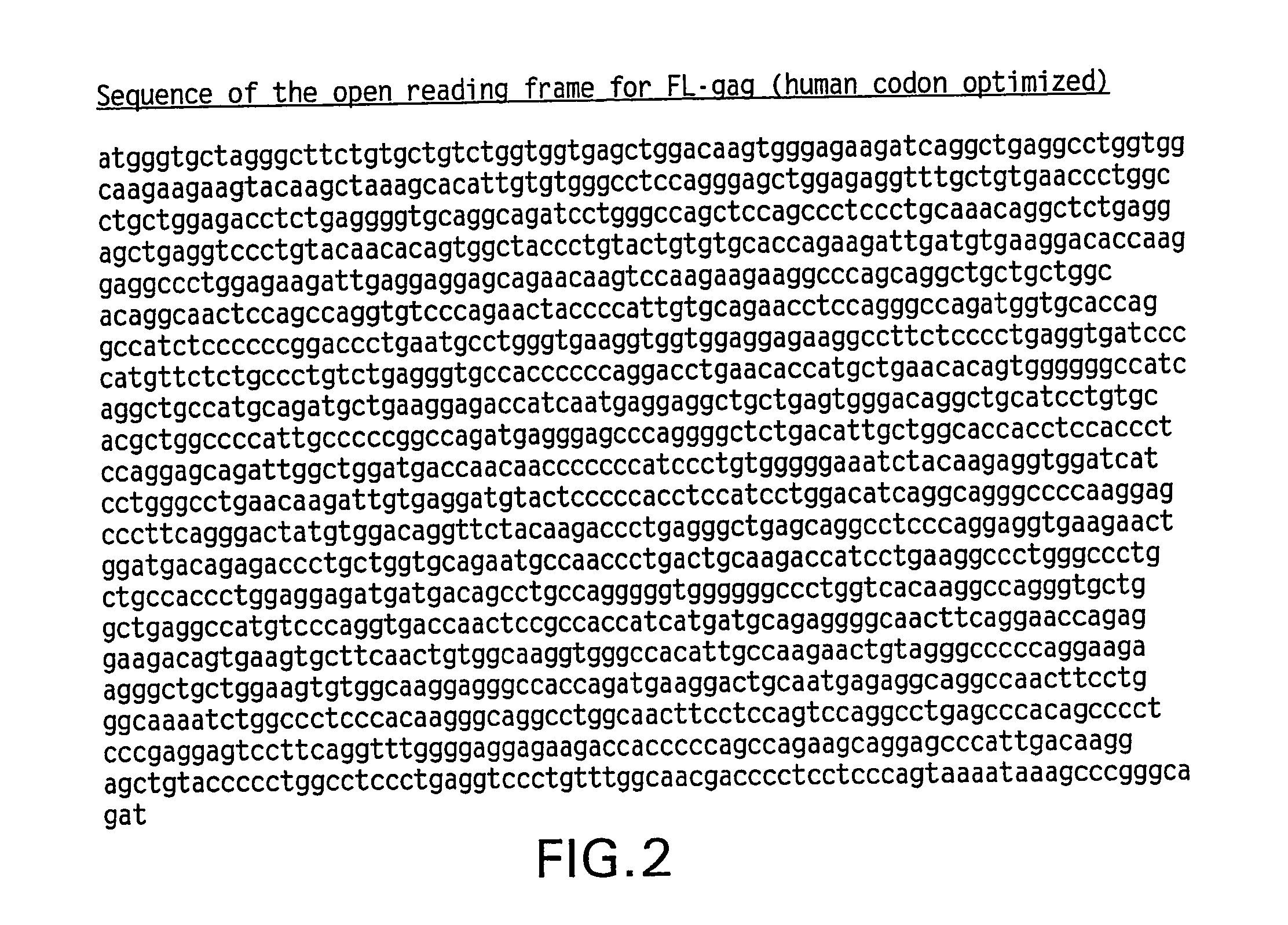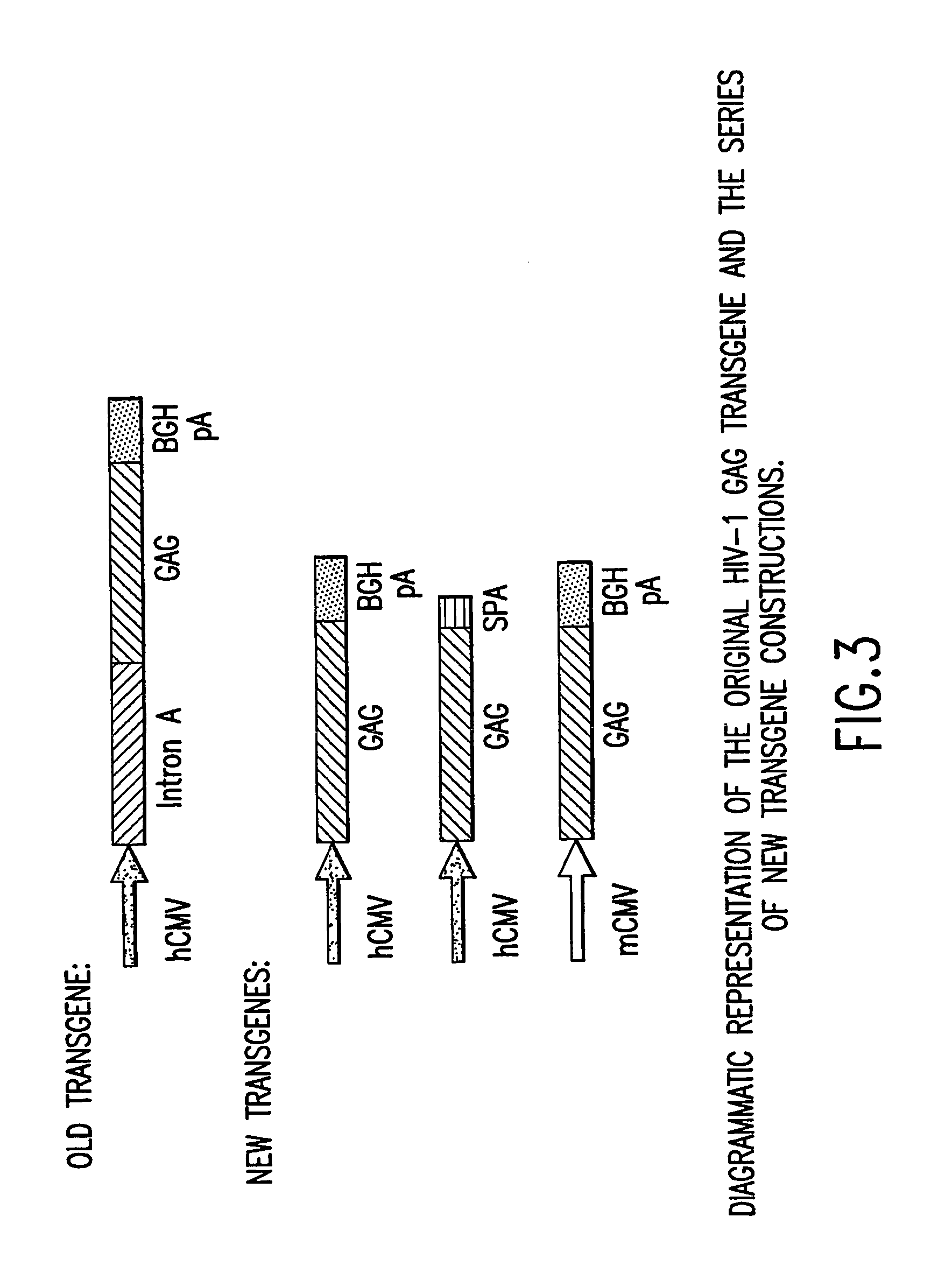Method of inducing an enhanced immune response against hiv
a technology of immune response and enhanced immunity, which is applied in the field of enhanced means for inducing an immune response against human immunodeficiency virus, can solve the problems of minimal impact on halting the spread of infection within the human population, drug effect not significant, and vaccine development success
- Summary
- Abstract
- Description
- Claims
- Application Information
AI Technical Summary
Benefits of technology
Problems solved by technology
Method used
Image
Examples
example 1
HIV-1 Gag Gene
[0095] A synthetic gene for HIV gag from HIV-1 strain CAM-1 was constructed using codons frequently used in humans; see Korber et al., 1998 Human Retroviruses and AIDS, Los Alamos Nat'l Lab., Los Alamos, N. Mex.; and Lathe, R., 1985 J. Mol. Biol. 183:1-12. FIG. 2 illustrates the nucleotide sequence of the exemplified optimized codon version of full-length p55 gag. The gag gene of HIV-1 strain CAM-1 was selected as it closely resembles the consensus amino acid sequence for the lade B (North American / European) sequence (Los Alamos HIV database). Advantage of this “codon-optimized” HIV gag gene as a vaccine component has been demonstrated in immunogenicity studies in mice. The “codon-optimized” HIV gag gene was shown to be over 50-fold more potent to induce cellular immunity than the wild type HIV gag gene when delivered as a DNA vaccine.
[0096] A KOZAK sequence (GCCACC) was introduced proceeding the initiating ATG of the gag gene for optimal expression. The HIV gag frag...
example 2
Generation of Adenoviral Serotype 5 Vector Constructs
A. Removal of the Intron A Portion of the hCMV Promoter
[0097] GMP grade pVIJnsHIVgag was used as the starting material to amplify the hCMV promoter. The amplification was performed with primers suitably positioned to flank the hCMV promoter. A 5′ primer was placed upstream of the Msc1 site of the hCMV promoter and a 3′ primer (designed to contain the BglII recognition sequence) was placed 3′ of the hCMV promoter. The resulting PCR product (using high fidelity Taq polymerase) which encompassed the entire hCMV promoter (minus intron A) was cloned into TOPO PCR blunt vector and then removed by double digestion with Msc1 and BglII. This fragment was then cloned back into the original GMP grade pV1JnsHIVgag plasmid from which the original promoter, intron A, and the gag gene were removed following Msc1 and BglII digestion. This ligation reaction resulted in the construction of a hCMV promoter (minus intron A)+bGHpA expression casset...
example 3
Generation of Adenoviral Serotype 6 Vector Constructs
A. Construction of Ad6 Pre-Adenovirus Plasmid
[0107] An Ad6 based pre-adenovirus plasmid which could be used to generate first generation Ad6 vectors was constructed taking advantage of the extensive sequence homology (approx. 98%) between Ad5 and Ad6. Homologous recombination was used to clone wtAd6 sequences into a bacterial plasmid.
[0108] The general strategy used to recover pAd6E1-E3+as a bacterial plasmid is illustrated in FIG. 7. Cotransformation of BJ 5183 bacteria with purified wt Ad6 viral DNA and a second DNA fragment termed the Ad5 ITR cassette resulted in the circularization of the viral genome by homologous recombination. The ITR cassette contains sequences from the right (bp 33798 to 35935) and left (bp 1 to 341 and bp 3525 to 5767) end of the Ad5 genome separated by plasmid sequences containing a bacterial origin of replication and an ampicillin resistance gene. The ITR cassette contains a deletion of E1 sequence...
PUM
| Property | Measurement | Unit |
|---|---|---|
| Fraction | aaaaa | aaaaa |
| Fraction | aaaaa | aaaaa |
| Fraction | aaaaa | aaaaa |
Abstract
Description
Claims
Application Information
 Login to View More
Login to View More - R&D
- Intellectual Property
- Life Sciences
- Materials
- Tech Scout
- Unparalleled Data Quality
- Higher Quality Content
- 60% Fewer Hallucinations
Browse by: Latest US Patents, China's latest patents, Technical Efficacy Thesaurus, Application Domain, Technology Topic, Popular Technical Reports.
© 2025 PatSnap. All rights reserved.Legal|Privacy policy|Modern Slavery Act Transparency Statement|Sitemap|About US| Contact US: help@patsnap.com



